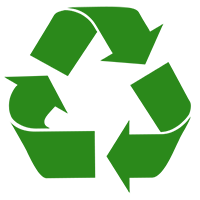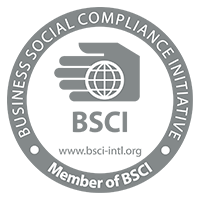
Bangladesh's home textile industry benefits from several factors, including its competitive labor costs, favorable government policies, and a skilled workforce. The country's strong presence in the ready-made garment industry has also provided a solid foundation for the development of the home textile sector.
Many international buyers and retailers source their home textile products from Bangladesh due to its cost-effectiveness and adherence to international quality standards. The industry has been successful in attracting foreign investment, leading to the establishment of modern manufacturing facilities and the adoption of advanced technologies.
Key players in the home textile industry in Bangladesh include manufacturers, exporters, and various industry associations. These organizations work together to promote the sector, ensure compliance with international standards, and address any challenges faced by the industry.
History of Total Home textile industry In Bangladesh
The home textile industry in Bangladesh has a relatively short but rapidly evolving history. Here is a summary of the key milestones and developments:
- Emergence in the 1990s: The home textile industry in Bangladesh started to gain momentum in the late 1990s. Initially, the country focused primarily on the export of ready-made garments. However, with increasing demand and opportunities in the global textile market, manufacturers began to diversify into home textile products.
- Government support and policies: The Bangladeshi government recognized the potential of the home textile sector and took several initiatives to promote its growth. Policies such as tax incentives, duty-free import of machinery, and infrastructure development support were introduced to attract investment and foster a favorable business environment.
- Investment and infrastructure development: In the early 2000s, both domestic and foreign investors started to invest in the home textile industry in Bangladesh. This led to the establishment of modern manufacturing facilities equipped with advanced machinery and technology. Additionally, industrial parks and specialized zones were developed to provide a conducive environment for textile production.
- Export growth and market expansion: With improved manufacturing capabilities and product quality, Bangladesh's home textile exports witnessed significant growth. The country successfully tapped into international markets, including the United States, European Union, and other regions, by offering competitive prices and maintaining compliance with global standards.
- Industry associations and collaborations: Several industry associations were formed to represent the interests of home textile manufacturers in Bangladesh. These organizations work towards promoting the sector, ensuring compliance with international standards, and addressing challenges faced by the industry. Collaboration with international buyers, retailers, and industry experts has also played a crucial role in the development of the sector.
- Sustainable practices and certifications: In recent years, the home textile industry in Bangladesh has placed increasing emphasis on sustainable practices and certifications. Many manufacturers have adopted environmentally friendly production processes, implemented social compliance standards, and obtained certifications like the Global Organic Textile Standard (GOTS) and Oeko-Tex Standard 100.
Competitive advantage of Total Home textile industry In Bangladesh
The Total Home textile industry in Bangladesh has a number of competitive advantages, including:
- Cheap labor: Bangladesh has a large pool of low-cost labor, which makes it a cost-effective destination for textile manufacturing.
- Government support: The Bangladesh government provides significant support to the textile industry, including tax breaks and subsidies.
- Quality of products: Bangladeshi textile manufacturers produce high-quality products that meet international standards.
These competitive advantages have helped Bangladesh to become a major exporter of textiles. In 2021, Bangladesh exported $34.5 billion worth of textiles, making it the world's second-largest exporter of textiles after China.
New Innovations of Total Home textile industry In Bangladesh
The home textile industry in Bangladesh has been embracing new innovations to enhance product quality, sustainability, and efficiency. Here are some notable innovations and trends in the sector:
- Smart textiles: The integration of smart technologies into home textiles is another emerging trend. Smart textiles incorporate features such as temperature regulation, moisture management, antimicrobial properties, and wearable technology. Bangladeshi manufacturers are exploring the development of smart home textiles that offer enhanced comfort and functionality to consumers.
- Automation and robotics: Automation and robotics are being introduced to streamline production processes and improve efficiency. Robotic systems are being utilized for tasks such as fabric cutting, sewing, and quality control. Automation helps reduce production time, increase accuracy, and optimize resource utilization.
Total Export status of Total Home textile industry In Bangladesh
The total export status of the Total Home textile industry in Bangladesh is positive. In 2021, Bangladesh exported $34.5 billion worth of textiles, making it the world's second-largest exporter of textiles after China. The industry is expected to continue to grow in the coming years, and Bangladesh is well-positioned to remain a major exporter of textiles.
Here are some of the key factors that are driving the growth of the Total Home textile industry in Bangladesh:
- The growing demand for textiles in the global market: The global demand for textiles is growing, and Bangladesh is well-positioned to meet this demand. The country has a large pool of low-cost labor, which makes it a cost-effective destination for textile manufacturing.
- The government's support for the textile industry: The Bangladesh government provides significant support to the textile industry, including tax breaks and subsidies. This support has helped the industry to grow and become more competitive.
- The quality of Bangladeshi textiles: Bangladeshi textile manufacturers produce high-quality products that meet international standards. This quality has helped the industry to gain a reputation for producing high-quality products.
List of items of Total Home textile industry In Bangladesh
The home textile industry in Bangladesh produces a wide range of products for the domestic and international markets. Here is a list of common items that are manufactured by the home textile industry in Bangladesh:
|
1) Bed Linen: |
2) Bath Linen: |
3) Table Linen: |
4) Kitchen Linen: |
5) Curtains and Draperies: |
6) Cushions and Pillows: |
|
Bed sheets |
Towels (bath towels, hand towels, face towels) |
Tablecloths |
Aprons |
Window curtains |
Decorative cushions |
|
Pillowcases |
Bathrobes |
Table runners |
Oven mitts |
Drapes |
Throw pillows |
|
Duvet covers |
Bath mats |
Placemats |
Pot holders |
Valances |
|
|
Bedspreads |
|
Napkins |
Dish towels |
|
|
|
Quilts |
|
Chair covers |
|
|
|
|
Blankets |
|
|
|
|
|
|
|
|||||
|
7) Rugs and Carpets: |
8) Upholstery Fabrics: |
9) Home Decor Accessories: |
10) Nursery and Kids' Textiles: |
11) Other Home Textile Products: |
|
|
Area rugs |
Fabrics used for furniture upholstery |
Wall hangings |
Baby bedding sets |
Mattress covers |
|
|
Carpet runners |
|
Throws |
Kids' bedding |
Pillow protectors |
|
|
|
|
Tapestries |
Crib sheets |
Mosquito nets |
|
|
|
|
|
Baby blankets |
|
|
Please note that this list is not exhaustive, and the home textile industry in Bangladesh may produce additional items or variations of the mentioned products. The availability of specific items may vary among manufacturers and retailers.
Current situation by Import Raw Materials of Total Home textile industry In Bangladesh
As of my knowledge cutoff in September 2021, the home textile industry in Bangladesh heavily relies on imported raw materials to meet its manufacturing needs. The import of raw materials is an integral part of the industry's supply chain. Some of the key raw materials imported by the home textile industry in Bangladesh include:
- Cotton: Bangladesh imports a significant amount of raw cotton to meet the demand for cotton-based home textile products. Cotton is a primary material used in the production of bed sheets, towels, and other textile items.
- Synthetic fibers: Imported synthetic fibers such as polyester, nylon, and acrylic are widely used in the home textile industry. These fibers offer durability, wrinkle resistance, and other desirable properties for various home textile products.
- Yarn: Bangladesh imports different types of yarn, including cotton yarn, polyester yarn, and blended yarn, to cater to the industry's diverse manufacturing requirements. Yarn is the intermediate product used in the weaving or knitting of fabrics.
How to More Improve of Total Home textile industry In Bangladesh
- Invest in training: The Bangladesh government and textile manufacturers can invest in training programs to help workers develop the skills they need to compete in the global market. This includes training in areas such as quality control, product design, and marketing.
- Focus on innovation: The textile industry can focus on innovation to develop new products and processes that meet the needs of consumers. This will help the industry to stay ahead of the competition. Some areas where the industry can innovate include developing new fabrics, creating new designs, and using new technologies.
- Improve working conditions: The textile industry in Bangladesh has been criticized for its poor working conditions. The industry can improve working conditions by providing safe and healthy workplaces, paying workers a fair wage, and respecting workers' rights.
By taking these steps, the Total Home textile industry in Bangladesh can improve its competitiveness and its reputation in the global market.
Leave a Reply
Your email address will not be published.






















Comments
0 Comment